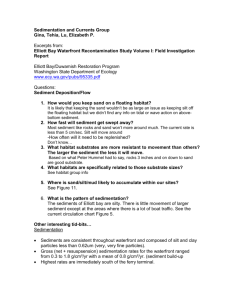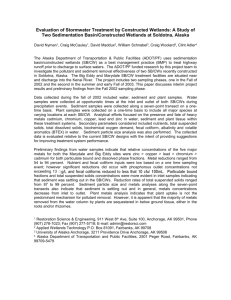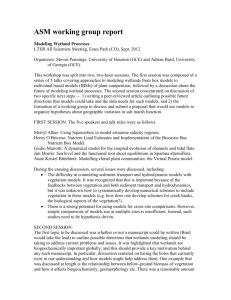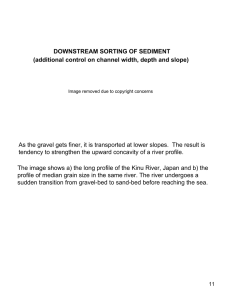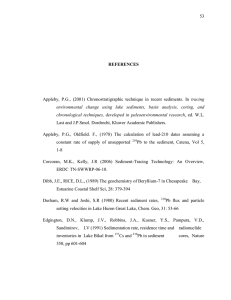Natural Radionuclide Dating For Calculation Of Sediment
advertisement
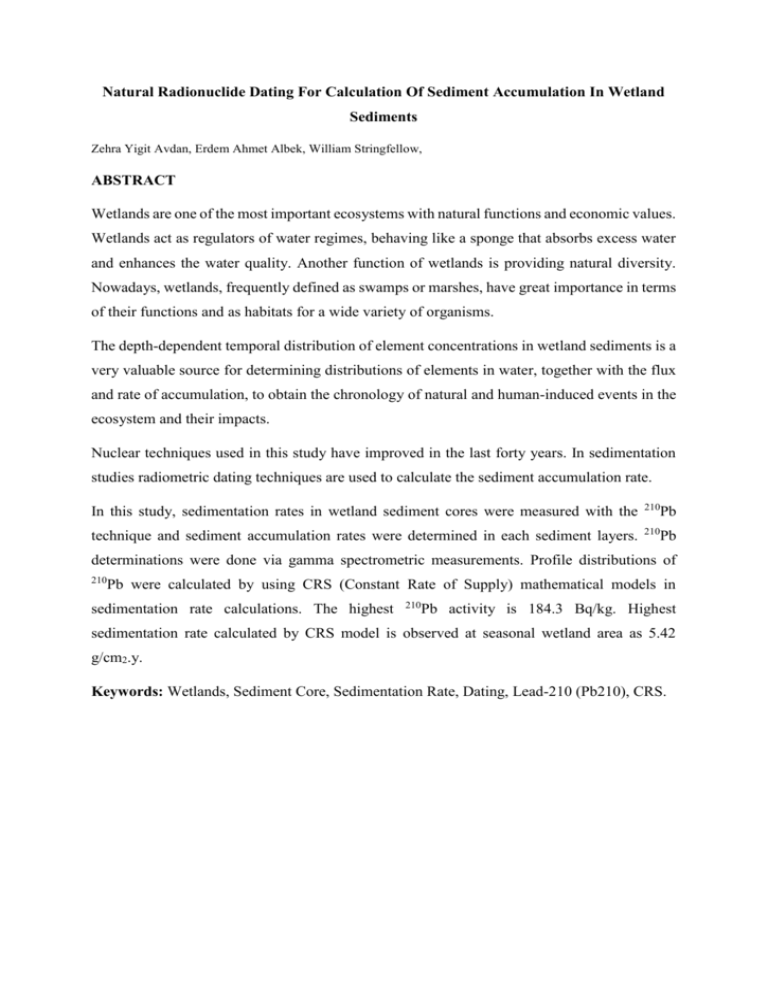
Natural Radionuclide Dating For Calculation Of Sediment Accumulation In Wetland Sediments Zehra Yigit Avdan, Erdem Ahmet Albek, William Stringfellow, ABSTRACT Wetlands are one of the most important ecosystems with natural functions and economic values. Wetlands act as regulators of water regimes, behaving like a sponge that absorbs excess water and enhances the water quality. Another function of wetlands is providing natural diversity. Nowadays, wetlands, frequently defined as swamps or marshes, have great importance in terms of their functions and as habitats for a wide variety of organisms. The depth-dependent temporal distribution of element concentrations in wetland sediments is a very valuable source for determining distributions of elements in water, together with the flux and rate of accumulation, to obtain the chronology of natural and human-induced events in the ecosystem and their impacts. Nuclear techniques used in this study have improved in the last forty years. In sedimentation studies radiometric dating techniques are used to calculate the sediment accumulation rate. In this study, sedimentation rates in wetland sediment cores were measured with the 210 technique and sediment accumulation rates were determined in each sediment layers. 210 Pb Pb determinations were done via gamma spectrometric measurements. Profile distributions of 210 Pb were calculated by using CRS (Constant Rate of Supply) mathematical models in sedimentation rate calculations. The highest 210 Pb activity is 184.3 Bq/kg. Highest sedimentation rate calculated by CRS model is observed at seasonal wetland area as 5.42 g/cm2.y. Keywords: Wetlands, Sediment Core, Sedimentation Rate, Dating, Lead-210 (Pb210), CRS.

